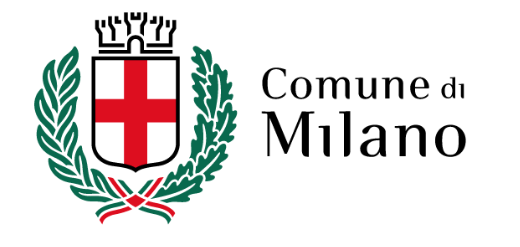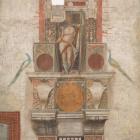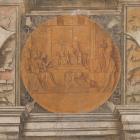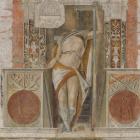- Milan Castle
- The building
- Gli ambienti di origine sforzesca
- I Rivellini
- I cortili
- I torrioni di Santo Spirito e del Carmine
- Il Cortile della Rocchetta
- Il Cortile delle Armi
- Il fossato
- L'ospedale Spagnolo
- La Cappella Ducale
- La Corte Ducale
- La Ghirlanda
- La Ponticella (sale IX e X nel Museo d’Arte Antica)
- La Sala degli Scarlioni (sala XV)
- La Sala del Tesoro
- La Sala delle Asse (sala VIII nel Museo d’Arte Antica)
- La Sala delle Colombine
- La Torre del filarete
- La sala dei ducali
- La strada coperta della Ghirlanda
- La torre Castellana e la torre Falconiera
- La torre di Bona
- Le Sale Ducali
- Le difese del Castello
- Le difese del Castello
- Le Merlate
- Le sale Ducali
- Le torri e le merlate
- The history
- Most recent restorations
- Don't miss out on
- The park
- The building
- Museums Libraries Archives
- Museo Pietà Rondanini - Michelangelo
- Museo d'Arte Antica
- Sala delle Asse - Leonardo da Vinci
- Pinacoteca
- Museo dei Mobili e delle Sculture Lignee
- Museo delle Arti Decorative
- Museo degli Strumenti Musicali
- Museo Archeologico - Sezione Preistoria e Protostoria
- Museo Archeologico - Sezione Egizia
- Raccolta delle Stampe "Achille Bertarelli"
- Gabinetto dei Disegni
- Archivio Fotografico
- Archivio Storico Civico e Biblioteca Trivulziana
- Biblioteca d'Arte
- Biblioteca Archeologica e Numismatica
- Casva (Centro di Alti Studi sulle Arti Visive)
- Ente Raccolta Vinciana
- Gabinetto Numismatico e Medagliere
- Opere dei musei in movimento
- The Castle and Milan
- Media gallery
- Plan your own tour

Treasure Room
The Sforzas decided to safeguard the treasure in the keep of the Rocchetta, the most impregnable part of the castle. The treasure room, which today houses the Trivulziana Library and temporary exhibitions, still conserves part of a decoration commissioned by Ludovico il Moro. Dated to between 1489 and 1491 and traditionally attributed to Bartolomeo Suardi, known as il Bramantino (before 1480 after 1530), a large fresco depicts Argus, a mythical 100-eyed giant, chosen as the symbolic custodian of the treasure. Architectural changes in the Sforza period deprived the central figure of his head. He is dressed in an animal skin, holding a stick in one hand and a medical-staff in the other. Argus would have been wearing either a diadem or a turban made of peacock feathers, an allusion to his 100 eyes. Two medallions to the side narrate how Mercury was able to lull him to sleep with music and then slay him. The reading of the scene on the central medallion is, however, altogether more complicated. Here, a group of people are depicted around a central figure whose right foot is resting upon a globe. The presence of a set of scales has led some art critics to hypothesise that this represents the “weighing of gold”, but doubts remain as to the symbolism of the scene. The only reference to the Sforza family seems to be the medical-staff or caduceus, which may have been added after the completion of the initial decorative project.













